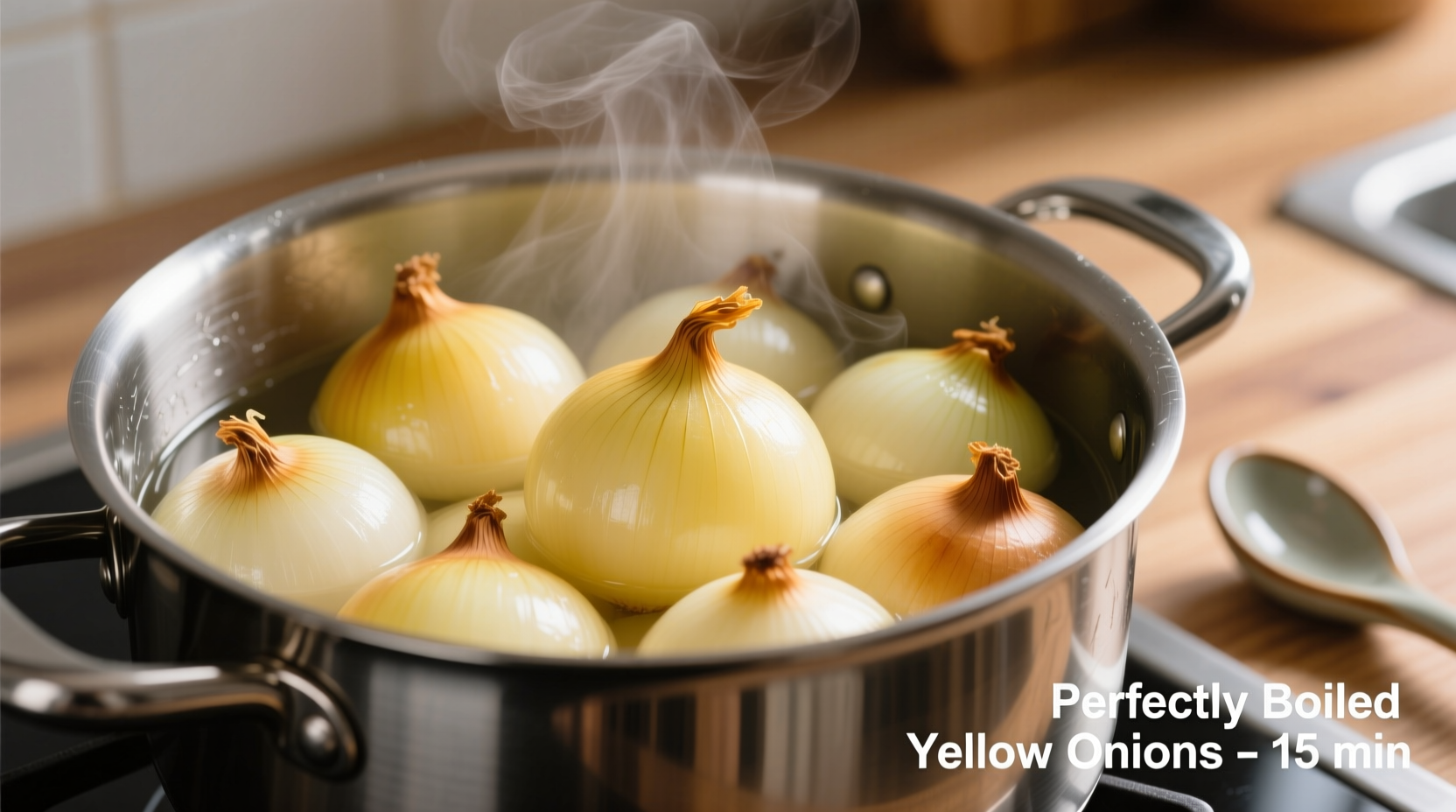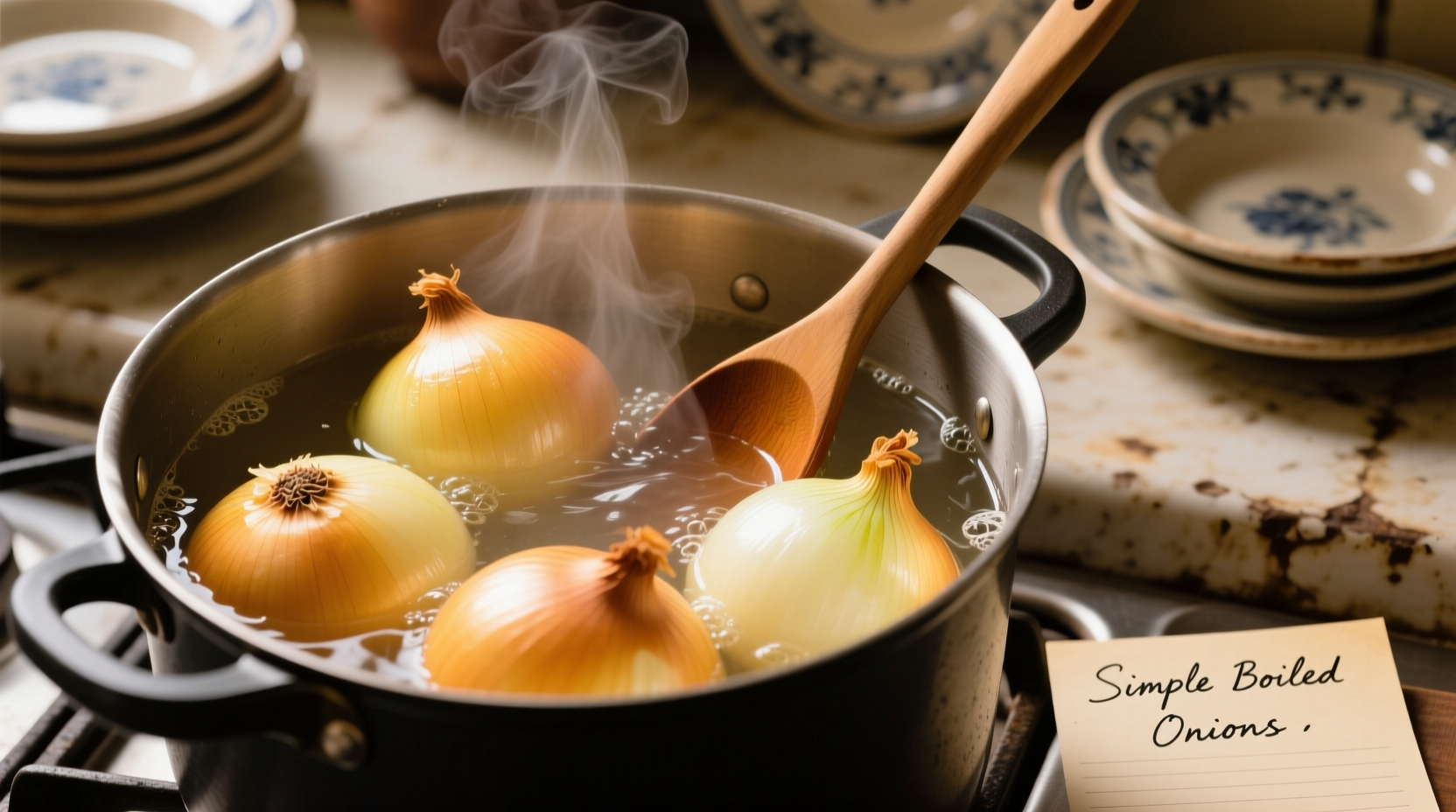Discover the perfect technique for boiling onions that maintains their nutritional value while creating a versatile ingredient for countless dishes. Whether you're seeking digestive benefits, a milder onion flavor for sensitive palates, or the ideal base for soups and stews, this straightforward method delivers consistent results every time.
Why Boil Onions Instead of Other Cooking Methods?
Boiling onions offers distinct advantages over frying or roasting when you need a subtle flavor profile or maximum nutrient retention. Unlike high-heat methods that can destroy certain beneficial compounds, boiling preserves quercetin—a powerful antioxidant abundant in onions—while reducing their sharpness.
According to USDA food composition data, boiled onions retain approximately 85% of their original quercetin content compared to just 65% in fried onions. This gentle cooking method also makes onions more digestible for people with sensitive stomachs while maintaining their fiber content.
| Cooking Method | Quercetin Retention | Digestibility Rating | Flavor Intensity |
|---|---|---|---|
| Boiling | 85% | ★★★★☆ | Mild |
| Frying | 65% | ★★★☆☆ | Strong |
| Roasting | 75% | ★★★☆☆ | Rich/Caramelized |
Choosing the Right Onions for Boiling
Not all onions respond equally well to boiling. Yellow onions provide the most balanced flavor for general use, while red onions maintain their color better when boiled. Pearl onions work beautifully for whole boiled applications like pickling or garnishes.
For maximum nutritional benefit, choose organic onions when possible. A 2023 study published in the Journal of Agricultural and Food Chemistry found organic onions contain up to 20% more quercetin than conventionally grown varieties due to different farming practices.
Step-by-Step Boiling Process
Follow this professional chef technique for perfectly boiled onions every time:
- Preparation: Peel onions and trim root ends. For smaller varieties like pearl onions, make a small "X" cut at the root end to facilitate easy peeling after boiling.
- Water Ratio: Use a 4:1 water-to-onion ratio in a non-reactive pot (stainless steel works best).
- Boiling Timeline:
| Onion Type | Size | Boiling Time | Texture Indicator |
|---|---|---|---|
| Yellow/Red | Medium (2-3") | 12-15 minutes | Fork tender but holding shape |
| Pearl | Small (1") | 8-10 minutes | Skin begins to separate |
| Shallots | 1-1.5" | 10-12 minutes | Translucent appearance |
For enhanced flavor development, add 1 teaspoon of salt per quart of water. Avoid overcrowding the pot—cook in batches if necessary—to ensure even cooking. The water should cover onions by about 1 inch.
Perfecting Texture and Doneness
Timing is crucial for ideal texture. Overboiling causes onions to disintegrate, while underboiling leaves them unpleasantly crunchy. Check for doneness at the minimum time by inserting a thin skewer:
- Perfectly cooked: Skewer meets slight resistance then slides through easily
- Undercooked: Significant resistance when inserting skewer
- Overcooked: Skewer slides through with no resistance; onions falling apart
Immediately transfer boiled onions to an ice bath for 2 minutes if using in cold applications like salads. For hot dishes, drain thoroughly in a colander and let sit for 2-3 minutes to allow excess moisture to evaporate.

Practical Applications for Boiled Onions
Boiled onions shine in applications where you want onion flavor without sharpness:
- Healthy side dish: Toss with olive oil, fresh herbs, and a squeeze of lemon
- Soup base: Provides mellow foundation for French onion soup or vegetable broths
- Digestive aid: Easier on sensitive stomachs than raw onions
- Pickling: Ideal starting point for quick-pickled onions
- Baby food: Gentle preparation method for introducing onions to infants
Troubleshooting Common Issues
Even simple techniques can present challenges. Here's how to address frequent problems:
- Onions falling apart: You've overboiled them or used older onions with less structural integrity. Reduce cooking time by 2-3 minutes next time.
- Too much water absorption: Drain thoroughly and let sit in colander for 5 minutes. For soups, add onions during the last 10 minutes of cooking.
- Lack of flavor: Add a bay leaf or garlic clove to the boiling water for subtle flavor enhancement.
- Color bleeding (red onions): Add 1 tablespoon of vinegar to the water to help maintain vibrant color.
Storage and Preservation Tips
Properly stored boiled onions maintain quality for meal prep:
- Refrigeration: Store in airtight container for up to 5 days
- Freezing: Spread cooled onions on baking sheet, freeze, then transfer to freezer bag (keeps 3 months)
- Quick-pickling: Submerge in equal parts vinegar and water with 1 tbsp sugar for refrigerator pickles in 24 hours
When reheating, add a splash of water and cover to prevent drying. Microwaving works well for single servings, while stovetop reheating preserves texture better for larger quantities.
Boiling vs. Other Onion Preparation Methods
Understanding when to boil versus other techniques ensures optimal results for your culinary goals:
- Boiling is best for: When you need mild flavor, maximum nutrient retention, or onions for cold applications
- Avoid boiling when: You want caramelized flavors, crispy texture, or maximum sulfur compound benefits (found in raw onions)
- Alternative method: For digestive benefits with more flavor, try steaming onions for 8-10 minutes instead
Professional chefs often combine methods—boiling onions first then finishing with a quick sauté—to achieve both tenderness and flavor complexity.











 浙公网安备
33010002000092号
浙公网安备
33010002000092号 浙B2-20120091-4
浙B2-20120091-4